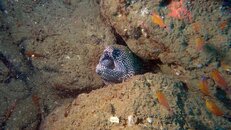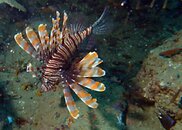Cosmographer
Contributor
- Messages
- 149
- Reaction score
- 28
- # of dives
- 200 - 499
I just returned from my very first dive with my own photo gear (Panny LX5, 10 Bar housing, YS-01) and noticed a significant amount of backscatter despite having an external strobe. The two pics below exhibit some of the worst backscatter I experienced, and hopefully, you can see from the shadows that the strobe was off to the side and slightly above the camera - not flashing straight forward.
Is this because I'm only using one 8 or 9 inch arm? The arm seems to get the strobe far enough away so that the light is hitting the subjects at an angle - is this not enough? I even tried to angle the strobe so that only the outer edges of the cone of light would illuminate the subjects as I learned from these forums. Not sure if that helped or not. Any advice on how to avoid this problem in the future would be much appreciated. (Yeah, I know these pics aren't focused either - one challenge at a time! )
)


Is this because I'm only using one 8 or 9 inch arm? The arm seems to get the strobe far enough away so that the light is hitting the subjects at an angle - is this not enough? I even tried to angle the strobe so that only the outer edges of the cone of light would illuminate the subjects as I learned from these forums. Not sure if that helped or not. Any advice on how to avoid this problem in the future would be much appreciated. (Yeah, I know these pics aren't focused either - one challenge at a time!





